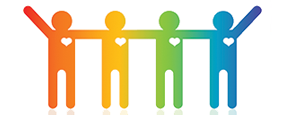
fongbeerredhot at Shutterstock
Falls and accidents are some of the major causes of head injuries, especially in children and older adults. However, you can lower the risk of suffering a serious head injury and ensure head safety in your routine life by taking a few simple measures.
Buckle Up for Brain Safety
Always Wear Your Seat Belt — Seat belts work to restrain an unintended forward movement during a collision or abrupt braking. Also, your car’s airbags work along with seat belts to keep you in place. Not wearing a seat belt renders this safety system ineffective. Furthermore, clicking it will also keep you from receiving a ticket!
Never Drive Under the Influence — Drug or alcohol intoxication is dangerous for you and fellow passengers, as well as others who share the road with you. It can impair your driving skills by slowing down the reaction time and undermining cognitive functions.
Don’t Text or Use Your Cell While Driving — Using mobile phones while driving is not only an offense but also a dangerous distraction. The NHTSA reported that it had claimed 3,166 lives in road accidents in 2017 alone. Distracted driving can lead to accidents, increasing the risk of incurring brain injuries or worse, death. So avoid taking calls or texting when you are at the wheel.
Protect Your Head With a Helmet
Motorists riding a two-wheeled vehicle must protect their head with a helmet. Always choose a helmet that bears the prescribed safety rating. Make sure that the one you choose is approved for safety by DOT, ECE or SNELL (predominantly for racing).
A poorly-fitted helmet can be worse than no helmet at all. Hence, make sure that your helmet sits squarely on your head (not too loose to have gaps) and doesn’t tilt backward. Its cheek pads should be pressed against your cheeks comfortably, and the brow pads should be positioned on your temples with no gaps in between. In full-face helmets, the face shield shouldn’t touch your nose, except due to wind pressure while riding.
Head Safety Tips for Kids
- Encourage your child to wear a helmet while driving, riding a horse or a bike, sledding, skiing, snowboarding, skateboarding and other sports.
- Depending on your kid’s age, use a booster or safety seat that fits him/her properly, and ensure that your child is buckled in properly. Also, keep up with the seat’s regular maintenance at a licensed inspection station only.
- Never drive with your child when you are intoxicated or feeling tired.
- Use non-slip mats in the bathroom and make other necessary improvements in your home to prevent falls.



